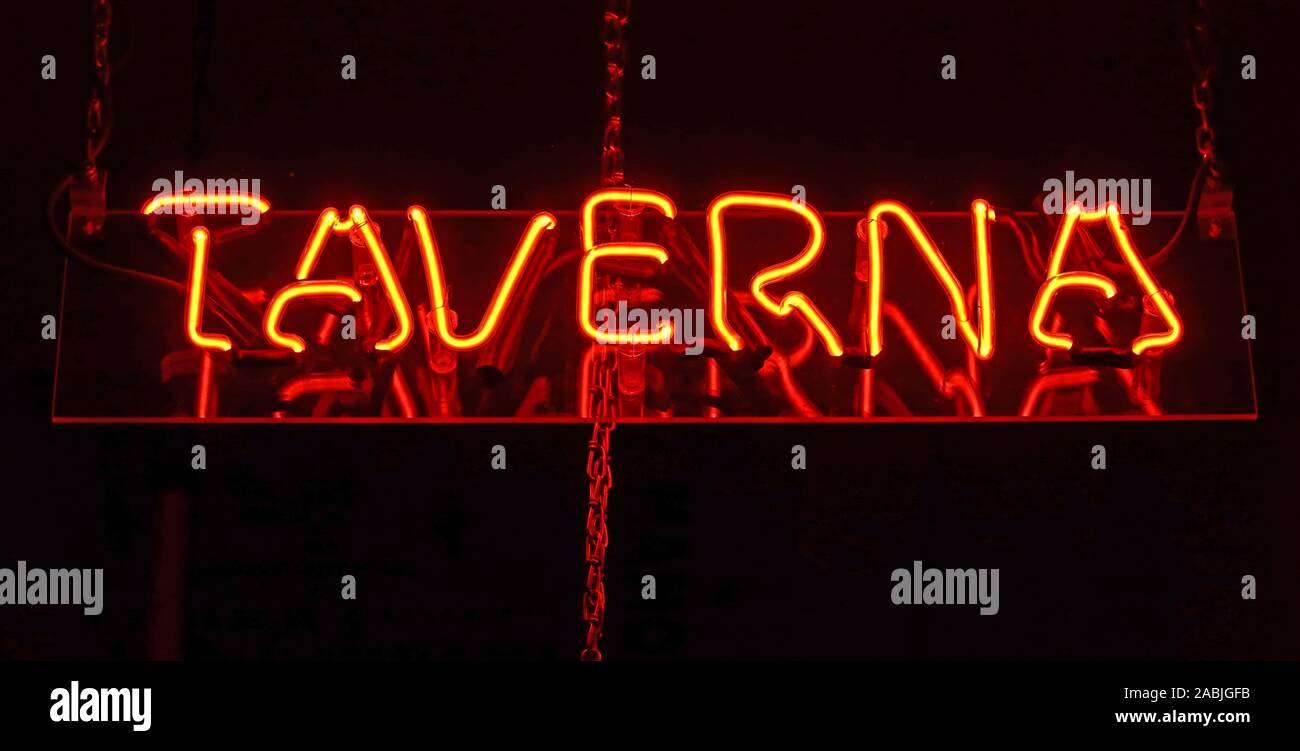Taverna red neon sign, restaurant, Birmingham, England, UK

Image details
Contributor:
Tony Smith / Alamy Stock PhotoImage ID:
2ABJGFBFile size:
43.6 MB (616.5 KB Compressed download)Releases:
Model - no | Property - noDo I need a release?Dimensions:
5472 x 2784 px | 46.3 x 23.6 cm | 18.2 x 9.3 inches | 300dpiDate taken:
17 November 2019Location:
Birmingham, England, UKMore information:
A taverna is a small Greek restaurant that serves Greek cuisine. The taverna is an integral part of Greek culture and has become familiar to people from other countries who visit Greece, as well as through the establishment of tavernes (ταβέρνες, plural) in countries such as the United States and Australia by expatriate Greeks. The earliest evidence of a Greek restaurant, or taverna, was discovered at the Ancient Agora of Athens (or Athenian Agora) during archaeological excavations conducted by the American School of Classical Studies in the early 1970s. Large quantities of classical Greek cooking and eating utensils were found at the taverna such as plates, mixing bowls, lidded casseroles, spits for broiling meat, mortars for chopping and grinding, as well as a cooking bell and a variety of jugs. Furthermore, large amounts of fish bones and shellfish remains were discovered revealing the menu specialties of the classical Greek taverna such as oysters, mussels, murex shells, and large fish. A nearby wine shop in the Athenian Agora, possibly in association with the taverna, served local Attic wine, as well as a wide variety of wines imported from Chios, Mende, Corinth, Samos and Lesbos.[1] In the 10th century AD, taverns in the Byzantine Empire that served pure wine were subject to a curfew in order to prevent alcohol-induced "violence and rioting", as documented in the Book of the Eparch 19